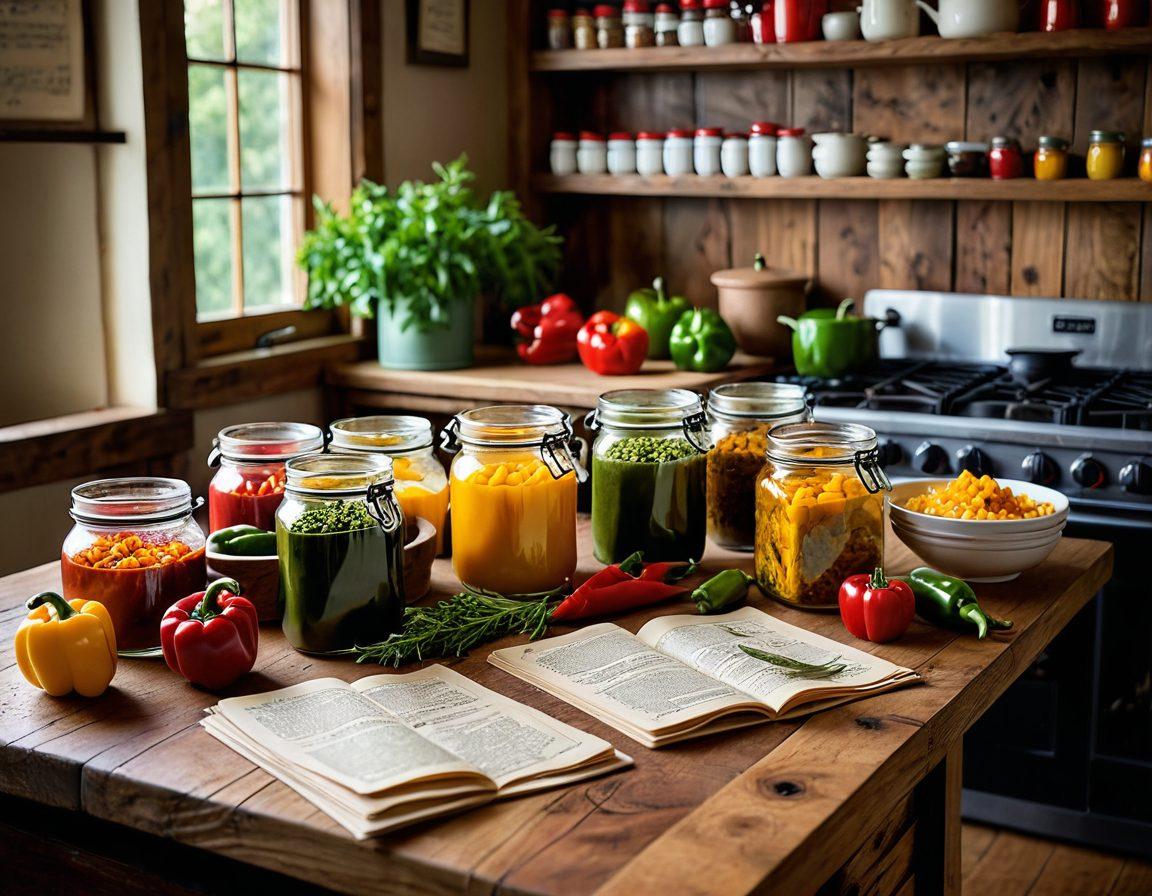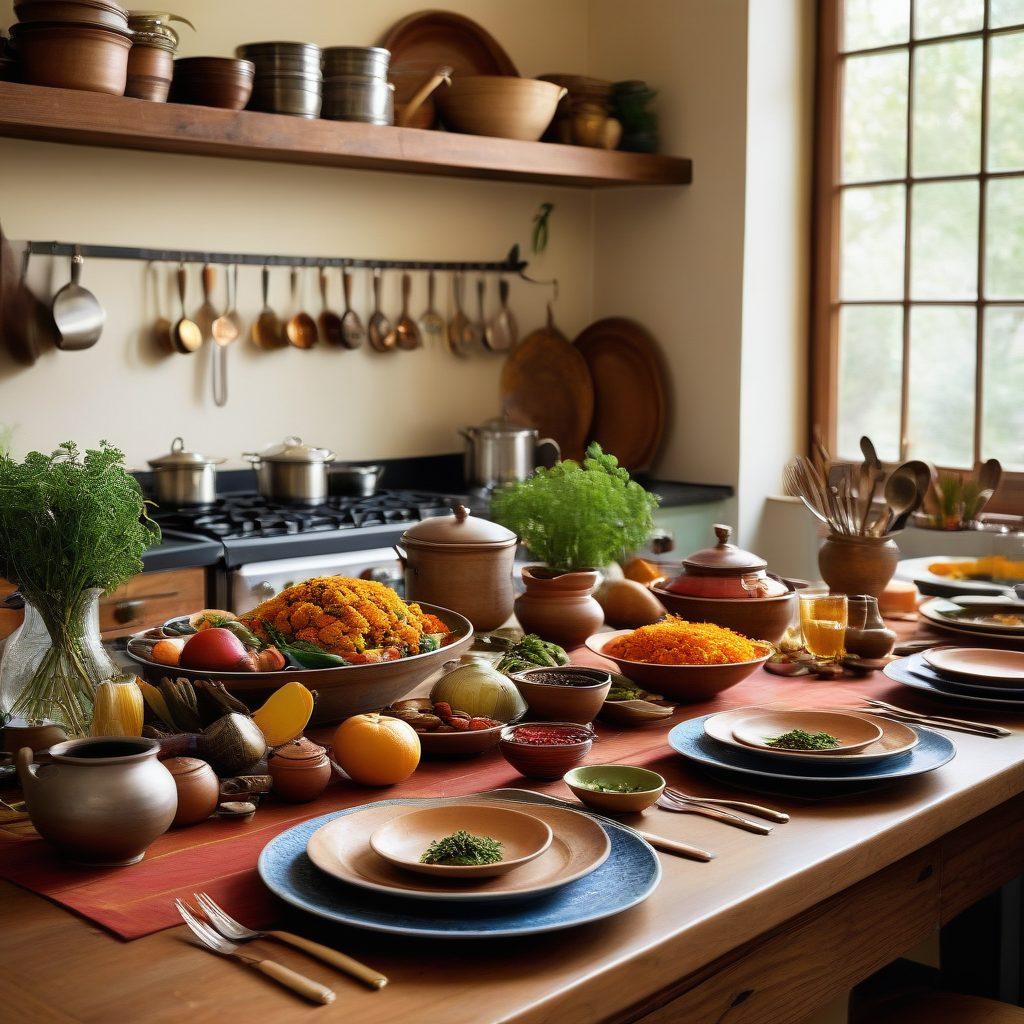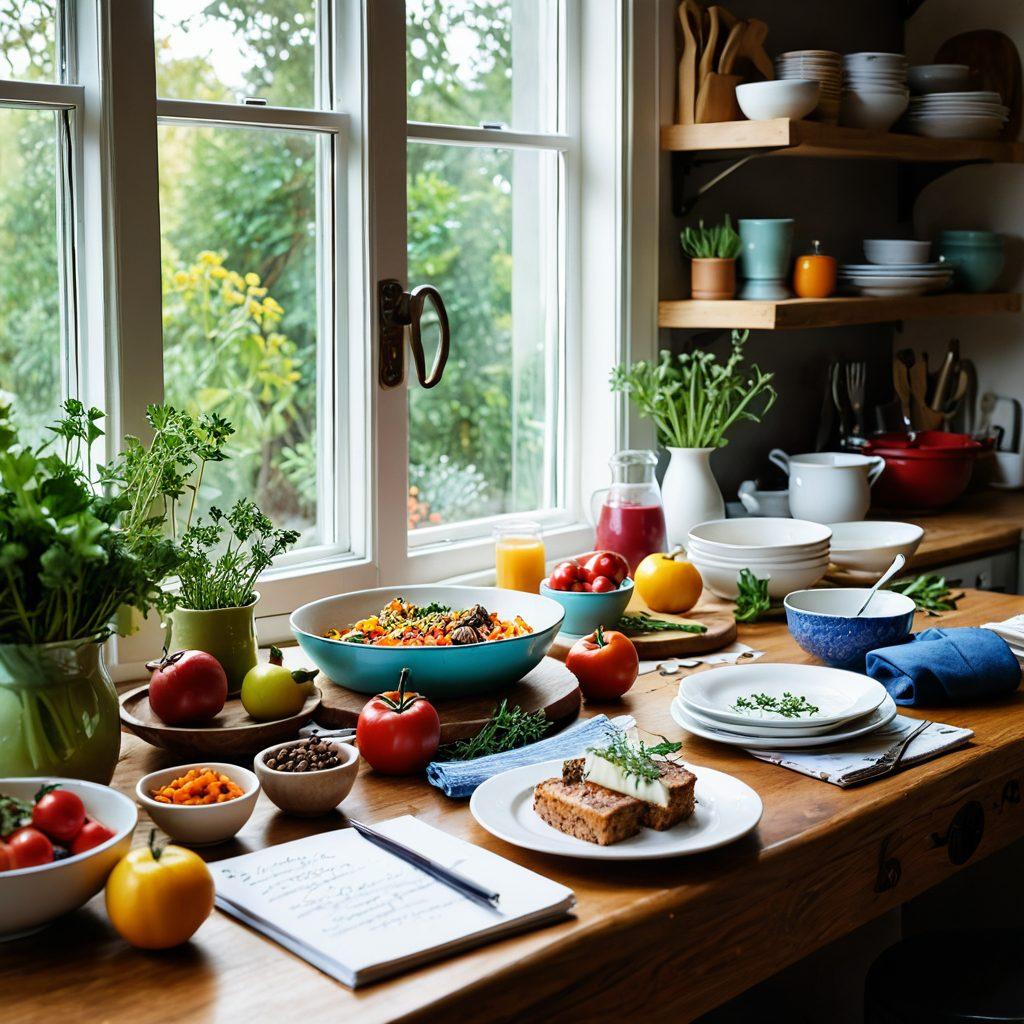Spice Up Your Blog: Essential Tips for Crafting Delicious Pepper-Based Recipes and Food Culture Stories
Every chef, whether amateur or expert, knows that flavor is the soul of cooking. While pepper might seem like a simple seasoning—often relegated to the corners of spice racks—it holds immense power. From the basic black peppercorn to the fiery habanero, peppers can transform any dish into a gastronomic adventure. If you’re eager to delve into the rich world of pepper-based recipes, buckle up as we explore how you can elevate your recipes with bold pepper varieties, making your food blog stand out amid the bustling blogging community.
Imagine biting into a dish that ignites all your senses. The crunch, the aroma, the faint echo of warmth lingering after every mouthful. That’s the magic of using diverse spice varieties, especially peppers. As I mixed up my latest recipe—a spicy jalapeño cornbread—I reflected on the creative journey that brings unique pepper cuisine to life. How can a humble vegetable spark such a profound experience? When you explore peppers, you are not just adding flavor; you’re inviting culture, history, and passion into your kitchen. Remember, great food not only satisfies but also tells a story, much like your blog should.
In the USA food culture, peppers have carved out their niche as symbols of boldness and flavor. Think about iconic dishes: chili, BBQ sauces, and salsas all reverberate with the potent notes of peppers. Traveling across the country, whether it's tasting the spicy offerings in a vibrant Southern diner or enjoying the heat of a Tex-Mex feast, you can reflect these experiences in your writing. Sci-fi writer Ray Bradbury once said, "The things you own end up owning you." While this rings true for belongings, I find it resonates with our culinary choices too. The spices we incorporate can define fresh uses of our creativity and flavor combinations in our lifestyle blog or food blog.
Engaging your readers means sharing actionable ideas that they can easily incorporate into their home cooking. Do you often find your dishes lacking that zest? Consider experimenting with lesser-known pepper varieties like the Padrón or the Aleppo pepper. These gems are not just for culinary arts; they become conversation starters at dinner parties. Challenge yourself to write about your cooking tips surrounding these spices—what inspired you to use them? How did they change the dish? Coupling these compelling narratives with enticing images can elevate your article writing and content creation, making your recipe blog a go-to for gourmet enthusiasts.
Let’s not forget that every recipe blog thrives on connection—between cultures, flavors, and readers. As you spin your pepper-based recipes, don’t shy away from showcasing culinary travel experiences. Share food reviews of local artisanal peppers or farmer’s markets that inspire your dishes. Your personal anecdotes will resonate deeply, drawing readers into your culinary journey. Will your next dish be a delightful escape, or will it become part of their weekly healthy recipes? The choice is in your hands. So next time you're penning your next blog, let each pepper stir the imagination and flavor, paving a journey through the ever-evolving world of gastronomy.
Crafting Culinary Narratives: The Art of Blending Food Culture and Personal Stories
Have you ever tasted a dish that transports you to another place, evoking the essence of a culture? Food is not just about sustenance; it's also a narrative that unfolds with every bite. When crafting culinary narratives for your food blog, weaving personal stories into your recipes can create an impactful experience for your readers. The art of blending food culture with personal anecdotes is what makes your blog more than just a collection of pepper-based recipes; it's a journey into the heart of gastronomy that reflects the USA food culture and beyond.
Imagine this: the smoky heat of a jalapeño pepper sizzling in the pan as you recreate a beloved family recipe. You can almost hear your grandmother's voice guiding you through the culinary process. This storytelling element adds warmth and relatability to your food blog. Each recipe is more than a set of instructions; it's a lived experience that resonates deeply with readers looking for not just great cooking tips, but a taste of the lifestyle behind the dish. Ask yourself, what memories do you want to evoke in your audience?
Within the world of blogging lies an abundance of spice varieties waiting to be explored. When writing your articles, remember that every pepper has a story to tell. From the fiery Scotch bonnet to the delicate flavors of a bell pepper, each has unique culinary uses that can enrich your recipes. The goal is to create a seamless connection between the ingredients, their origins, and your personal story. Readers are drawn to content that feels authentic and inspiring; so consider this a travel guide through flavors, leading them through the cultural landscapes attached to each dish.
Creating a lifestyle blog centered around food culture allows for dynamic engagement. As you share your pepper-based recipes, don't shy away from incorporating travel tips that enhance the culinary journey. Where did you find that exotic pepper? Perhaps a bustling market during your travels? This not only adds depth to your content creation but also personalizes the experience, inviting readers to become a part of your adventure. Think about how you can turn simple cooking tips into enchanting tales that make your readers feel like they are right there with you, ready to whip up something gourmet in their own kitchens.
Lastly, the key to a successful recipe blog lies in the connection you build with your audience. Your stories should be as rich as the flavors you are portraying. Encourage feedback, share food reviews, and when possible, invite your readers to share their own pepper-based recipes. This interaction fosters a community around your blog, allowing it to flourish. So, as you craft your culinary narratives, remember that blogs are more than just content; they are the spice of life, seasoning the everyday with tales and flavors that linger beyond the plate.
From Writing to Savoring: Essential Tips for Engaging Food Blogging on Pepper Cuisine
Picture this: you're in a bustling kitchen, the air is thick with the scent of freshly cracked black pepper, and your taste buds are tingling with anticipation. Food blogging is not merely about sharing recipes; it's about creating an enriching experience that resonates with your readers. With the right blend of writing tips and culinary passion, you can take your blog from a simple recipe collection to a lifestyle blog that celebrates the diverse world of pepper cuisine. Are you ready to spice things up?
First things first, let’s dive into the heart of your food blog: storytelling. Every recipe tells a tale, from the origins of the spices to the memories attached to the dish. Incorporate narratives that reflect your culinary journey or those of others around you. Remember the saying, 'Food is the ingredient that binds us together'? Use that philosophy as a jumping-off point! Share experiences of culinary travel or the cultural significance of specific dishes in various USA food culture contexts. Your readers will not only appreciate the pepper-based recipes but will also connect with the experiences you share.
When crafting your content, think about varying your sentence structure to keep your readers engaged. Short, punchy sentences can add excitement, while longer, descriptive passages can create a vivid scene. Think of it this way: if your blog post were a dish, you want it to have multiple flavors – a hint of sass, a sprinkle of info, and a dash of humor. Perhaps start with a quirky quote about food that sets the tone for your article writing. How about, 'There is no love sincerer than the love of food'? Let this create a warm and inviting atmosphere for your readers.
Also, don't underestimate the power of practical cooking tips and gourmet insights. Readers flock to food blogs not only for recipes but also for advice on how to master the culinary arts. When discussing spice varieties, like the subtle differences between white pepper and pink peppercorns, include anecdotes or travel tips that have inspired your understanding of the ingredients. This way, you're not just providing a recipe blog; you're building a bridge between the art of cooking and the love for home cooking, encouraging readers to experiment in their kitchens.
To really grab your audience’s attention, consider including insightful food reviews. Discuss your favorite dishes from local eateries that showcase pepper-based goodness, or highlight healthy recipes that can be tweaked to incorporate spices creatively. By blending culinary travel with pepper cuisine exploration, you're offering readers not just meals to prepare but experiences to savor. After all, what greater joy is there than sharing a meal that warms the heart and excites the palate? So, go ahead and let your blog reflect your passion for food and culture, one peppery recipe at a time.


